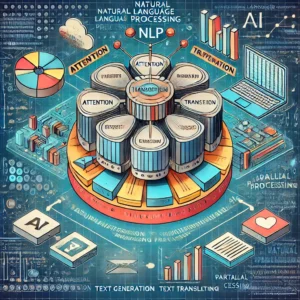The Path to Natural Language Processing (NLP)
Natural Language Processing (NLP) is a branch of AI focused on enabling machines to understand and generate human language. Early NLP models were quite limited, but advancements like Transformers revolutionized the field, allowing machines to process and generate text more accurately.
 Introduction to NLP:
Introduction to NLP:
Natural Language Processing (NLP) is a critical branch of AI that focuses on the interaction between computers and human language. The goal of NLP is to enable machines to understand, interpret, and generate human language in a way that is both meaningful and useful.
Early Challenges in NLP:
In the early stages, NLP faced significant challenges due to the complexity and variability of human language. Early models were rule-based, relying on predefined grammatical structures to process language, but they were limited in their ability to handle the nuances and ambiguity of real-world language.
The Evolution of NLP:
The development of Machine Learning, and later Deep Learning, transformed NLP. By training models on vast amounts of text data, researchers were able to create systems that could better understand and generate human language. The introduction of Transformers—a type of deep learning model—marked a significant breakthrough in NLP.
How Transformers Work:
- Attention Mechanism:
Transformers use an attention mechanism that allows the model to focus on different parts of the input text, making it more effective at understanding context and relationships between words. - Parallel Processing:
Unlike earlier models, which processed data sequentially, transformers can process all words in a sentence simultaneously. This parallel processing capability allows them to handle long sentences and complex language structures more efficiently.
Applications of NLP:
- Text Generation: AI systems can generate human-like text, from writing emails to creating stories.
- Translation Services: Tools like Google Translate use NLP to translate text between languages with high accuracy.
- Virtual Assistants: Assistants like Siri and Alexa use NLP to understand spoken commands and respond appropriately.
Conclusion: Natural Language Processing has come a long way, thanks to advancements in Machine Learning and Deep Learning. Today, NLP is integral to many AI applications, enabling machines to interact with humans in more natural and meaningful ways.
